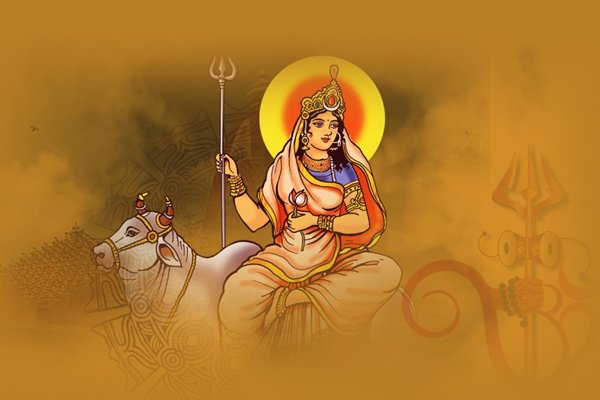Day 1 of Navratri: Worshipping Goddess Shailputri, the Embodiment of Strength and Devotion

Navratri, the grand festival dedicated to Goddess Durga, begins with immense enthusiasm and devotion across India. It is a time of spiritual awakening, fasting, and celebrations that honor the divine feminine energy. Each of the nine days is dedicated to a different form of Goddess Durga, and the first day is devoted to Maa Shailputri, the daughter of the mountains and the epitome of purity, strength, and devotion.
Who is Goddess Shailputri?
Maa Shailputri, meaning "Daughter of the Mountain," is the first form of Navdurga. She is the reincarnation of Goddess Sati, the consort of Lord Shiva. After self-immolating in her previous birth, she was reborn as the daughter of King Himavan, the ruler of the Himalayas. In this form, she rides a bull, holds a trident and a lotus, and represents the grounding force of nature, inner strength, and unwavering devotion.
Significance of Day 1
The first day of Navratri is considered highly auspicious, as devotees invoke Maa Shailputri’s blessings for strength, prosperity, and a balanced life. Her association with the Muladhara (root) chakra signifies stability and the beginning of a spiritual journey. Worshipping her helps remove obstacles, instills patience, and prepares devotees for the sacred days ahead.
Rituals and Worship
-
Kalash Sthapana (Ghatasthapana): The festival begins with the establishment of a sacred urn (Kalash) filled with water, mango leaves, and a coconut, symbolizing the presence of divine energy.
-
Mantra Chanting: Devotees recite sacred hymns and mantras such as: ॐ देवी शैलपुत्र्यै नमः (Om Devi Shailputryai Namah)
-
Fasting: Many devotees observe a fast, consuming fruits, milk, and satvik food to purify the body and mind.
-
Offering and Bhog: White-colored sweets, pure ghee, and flowers are offered to Maa Shailputri, as white is her sacred color representing peace and purity.
-
Garba and Dandiya: In the evening, people gather to celebrate with traditional dance forms like Garba and Dandiya Raas, creating an atmosphere of devotion and joy.
The Color of the Day: White
Each day of Navratri has a designated color, and for Day 1, white is considered auspicious. Wearing white symbolizes peace, clarity, and new beginnings, aligning with the essence of Maa Shailputri’s energy.
Spiritual Message
Maa Shailputri teaches us the virtues of patience, faith, and unwavering devotion. Just as she endured hardships and stayed dedicated to her divine path, we too should face challenges with resilience and a strong spiritual foundation.
As we embark on this sacred journey of Navratri, let us invoke the grace of Maa Shailputri, seeking strength, clarity, and the courage to overcome all obstacles. May her blessings guide us towards a life of wisdom, peace, and spiritual fulfillment.
Jai Maa Shailputri
